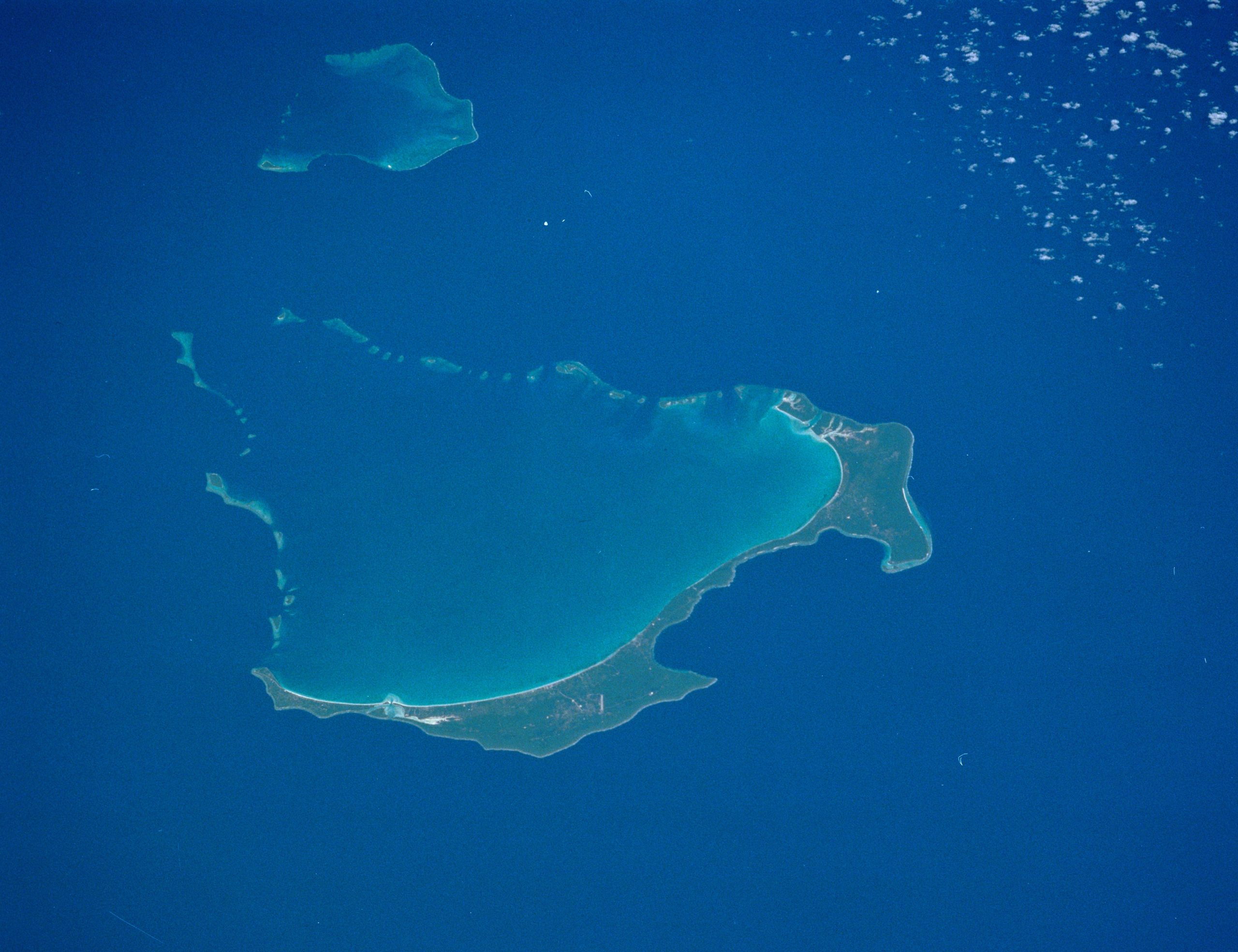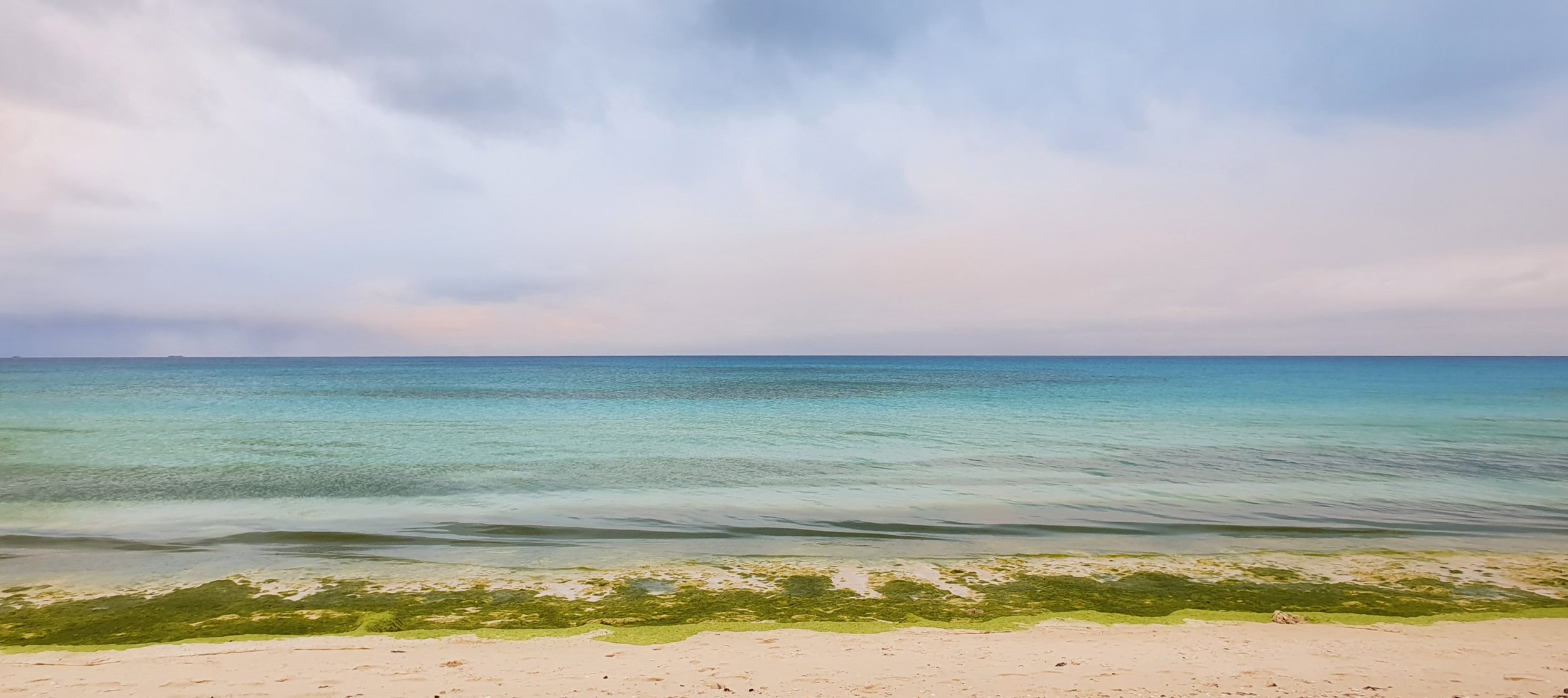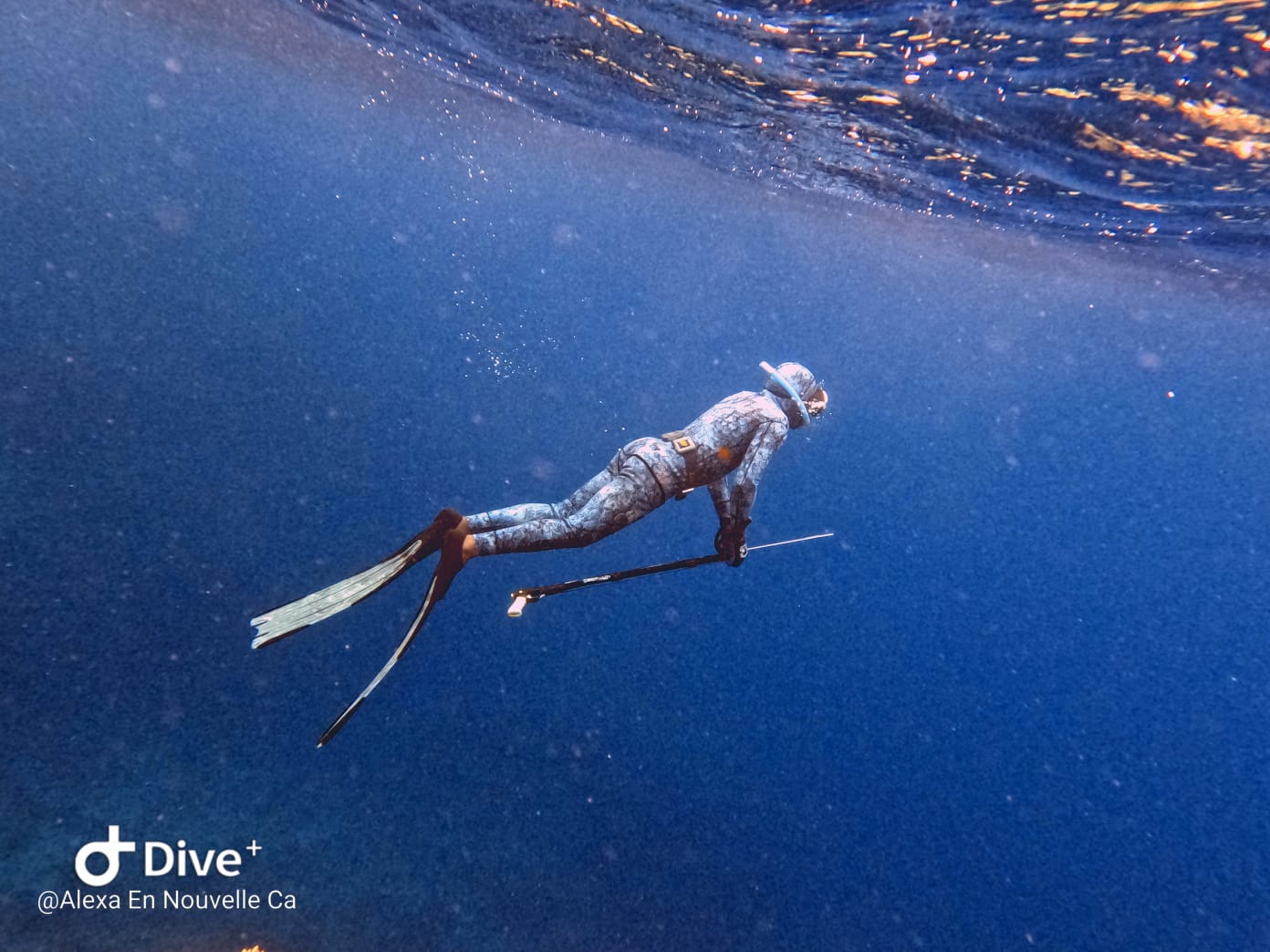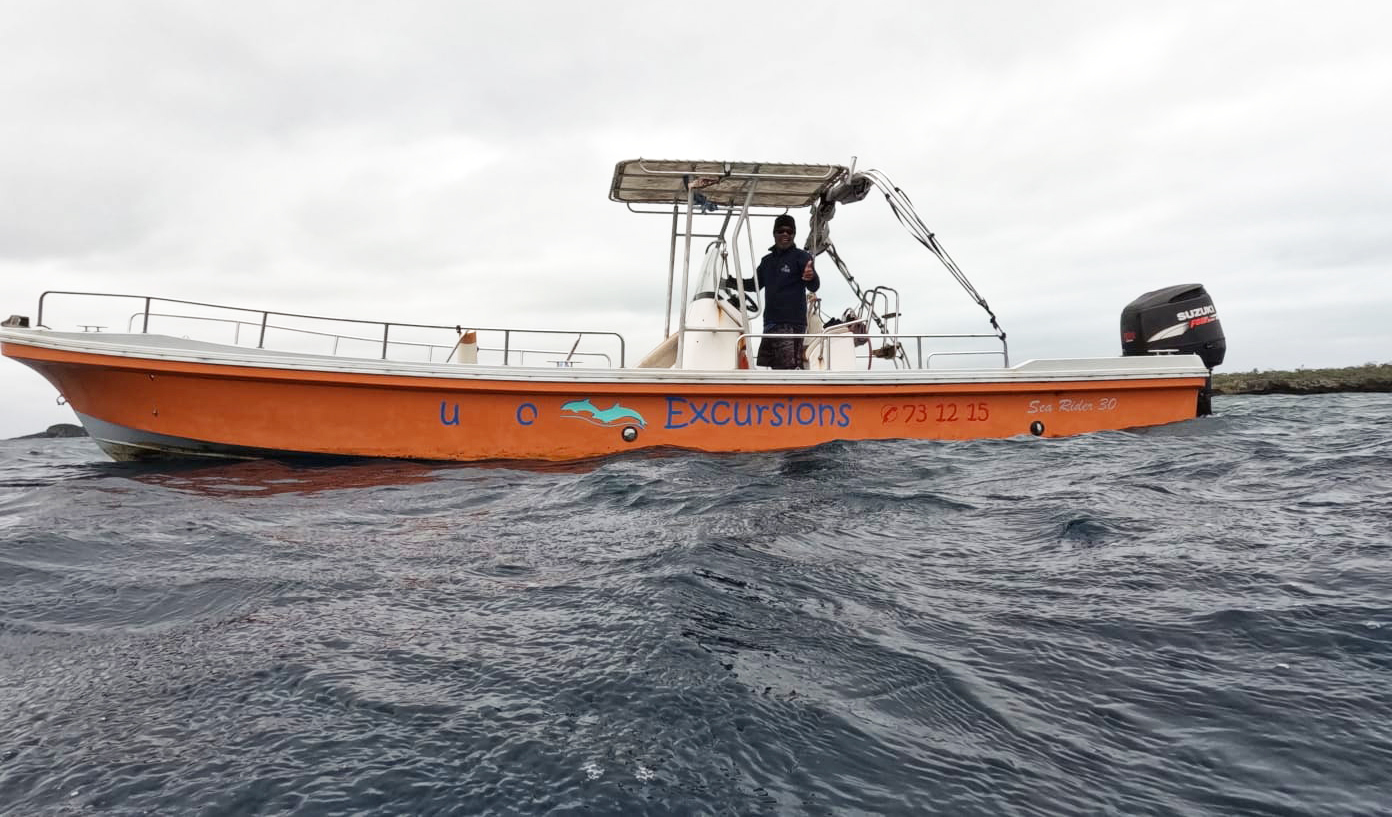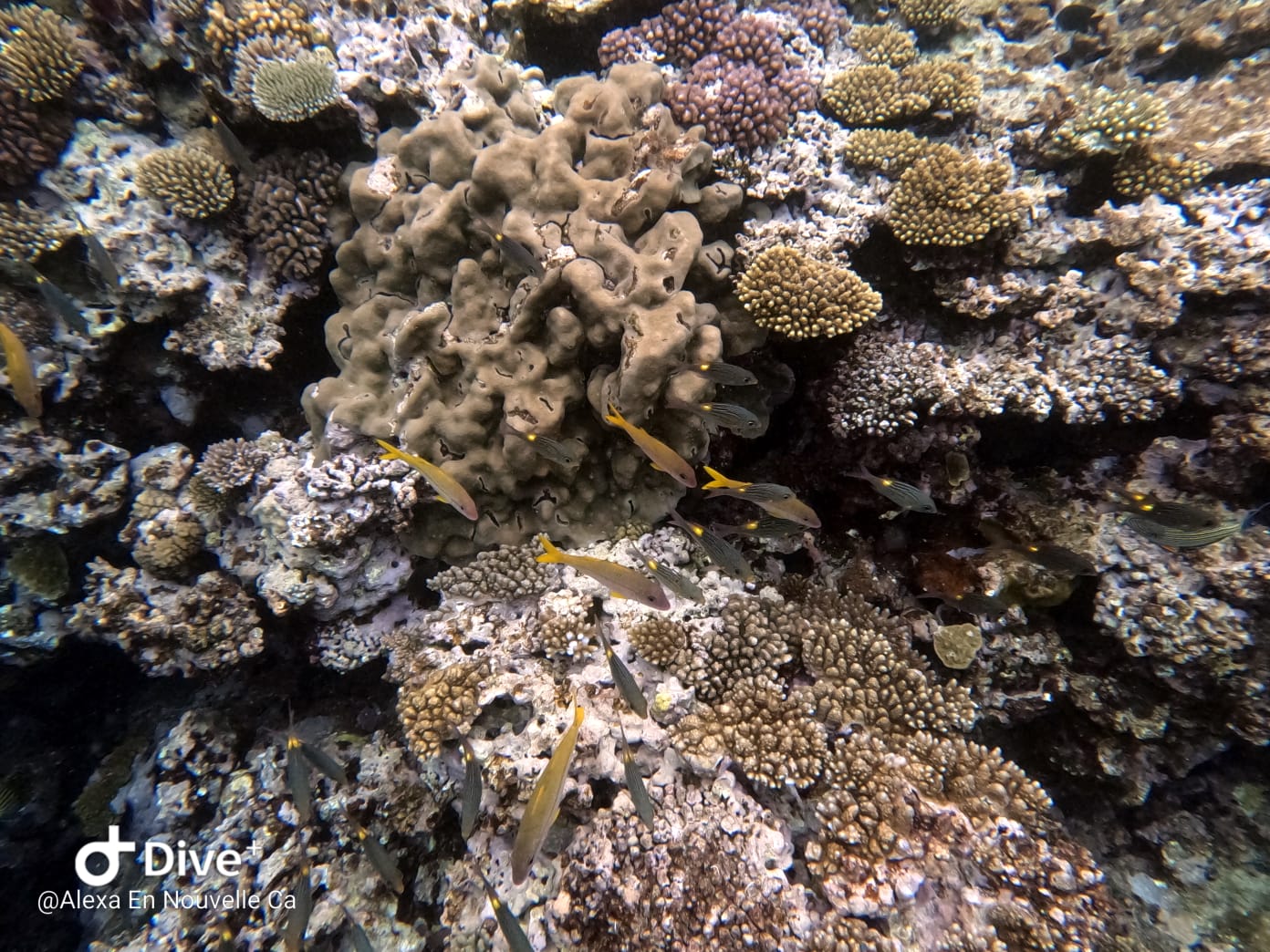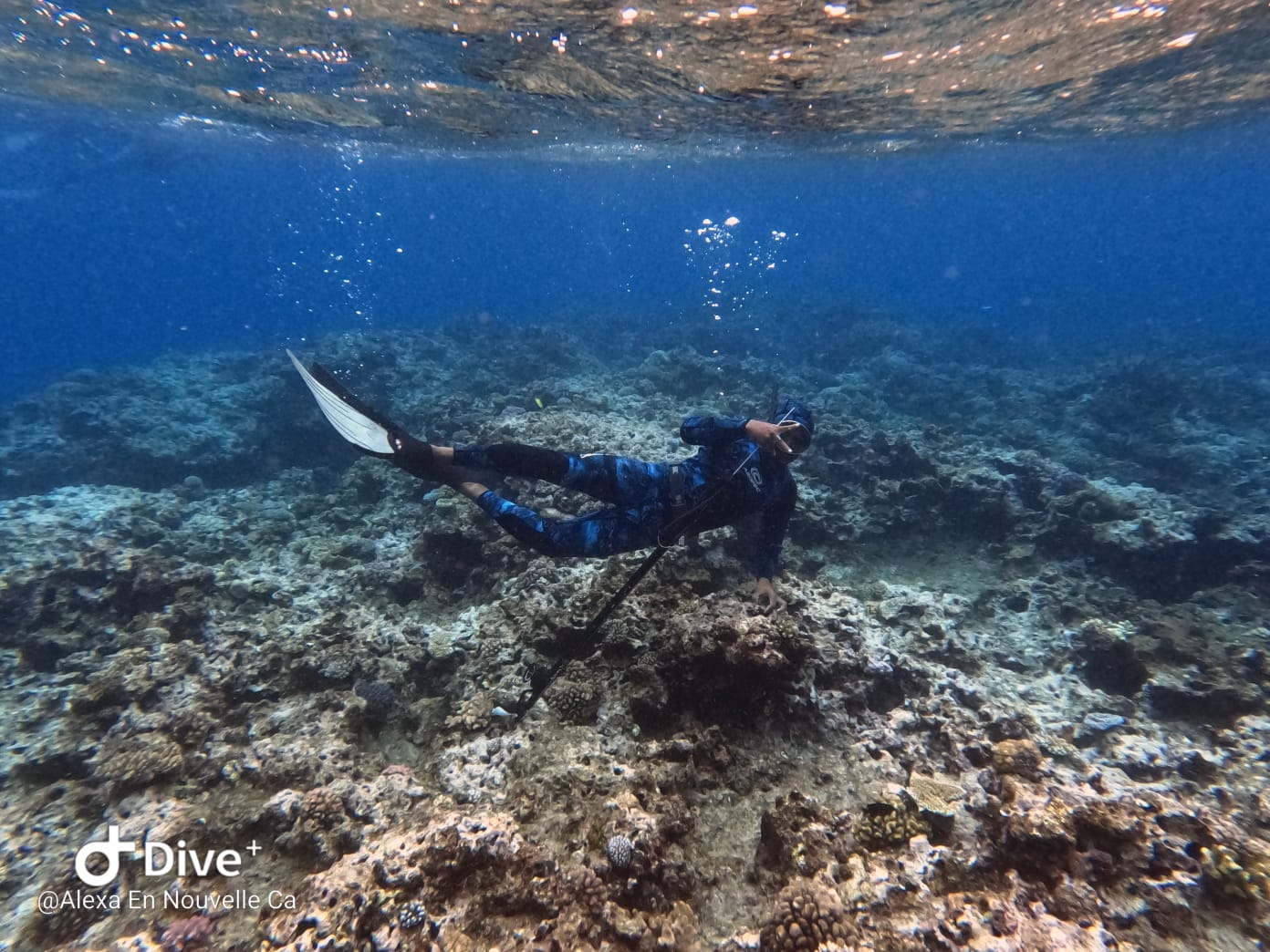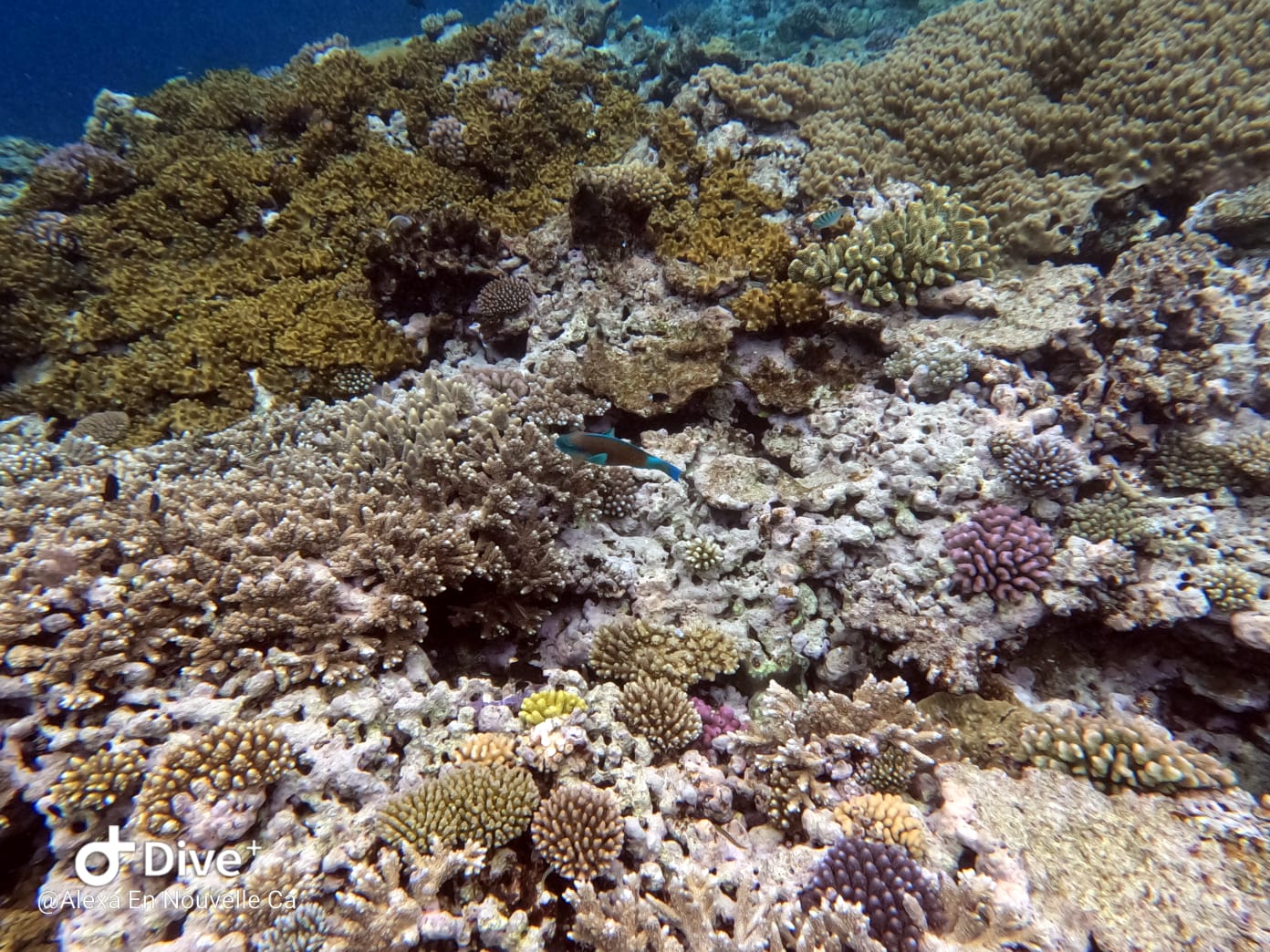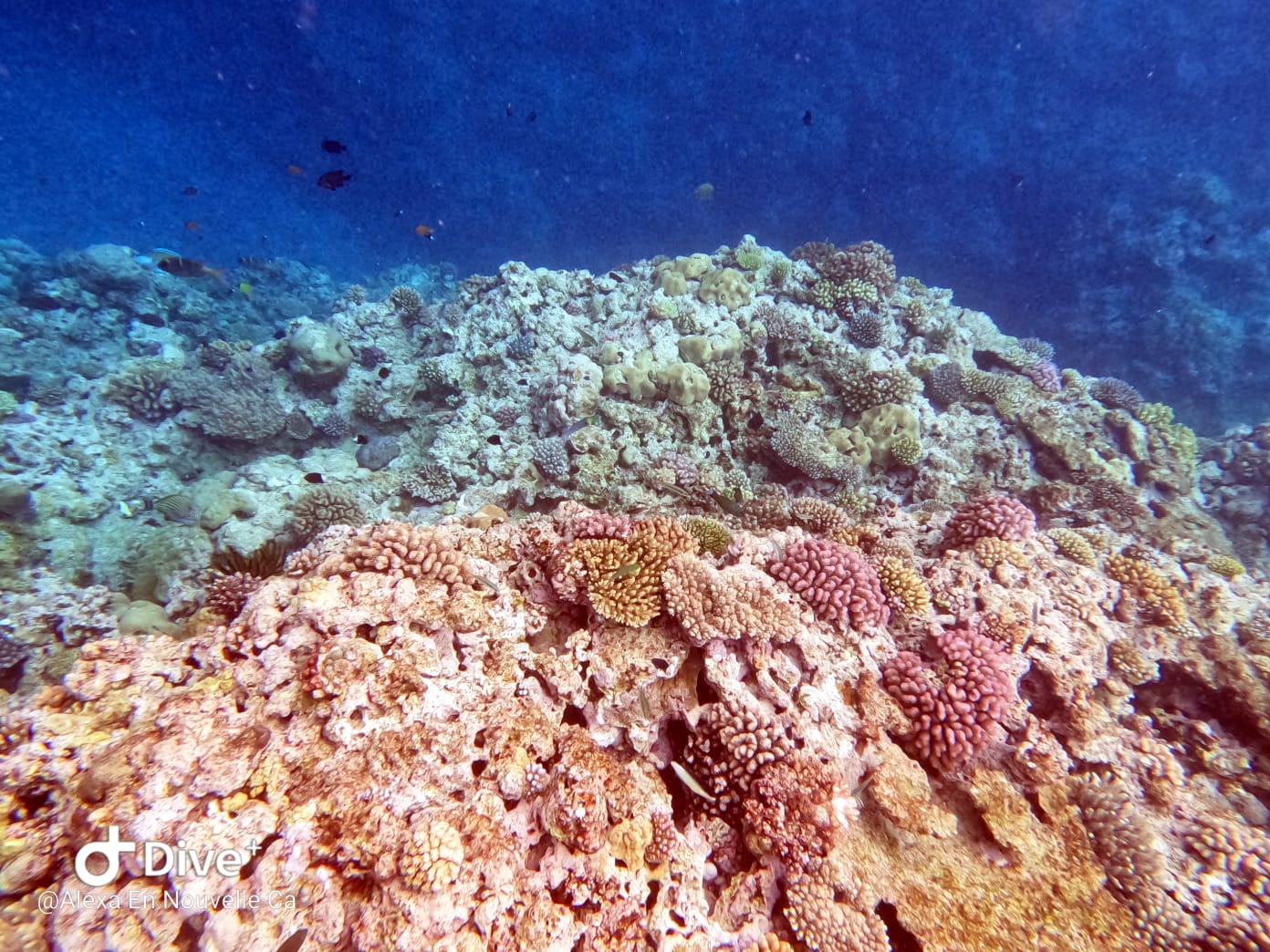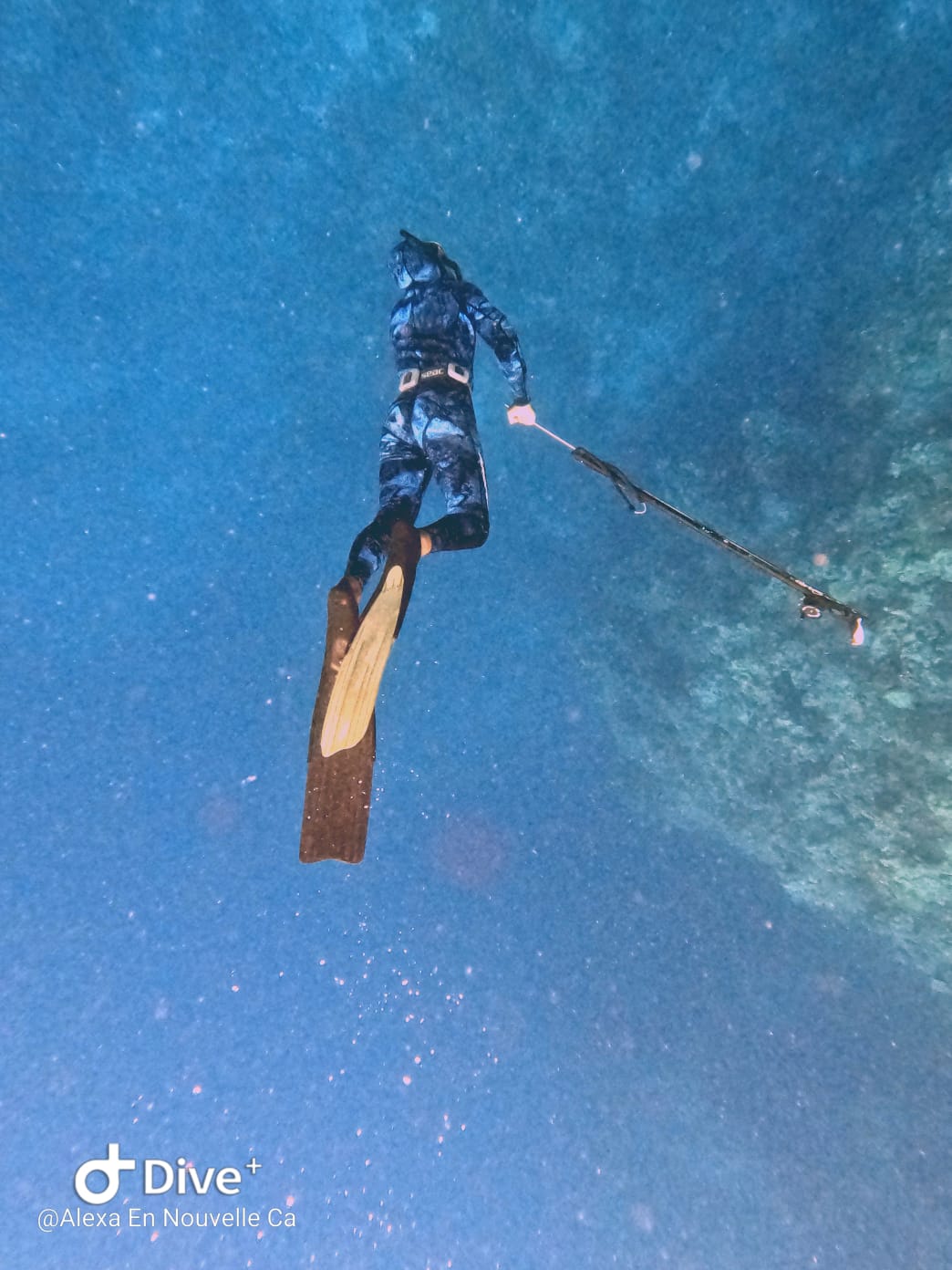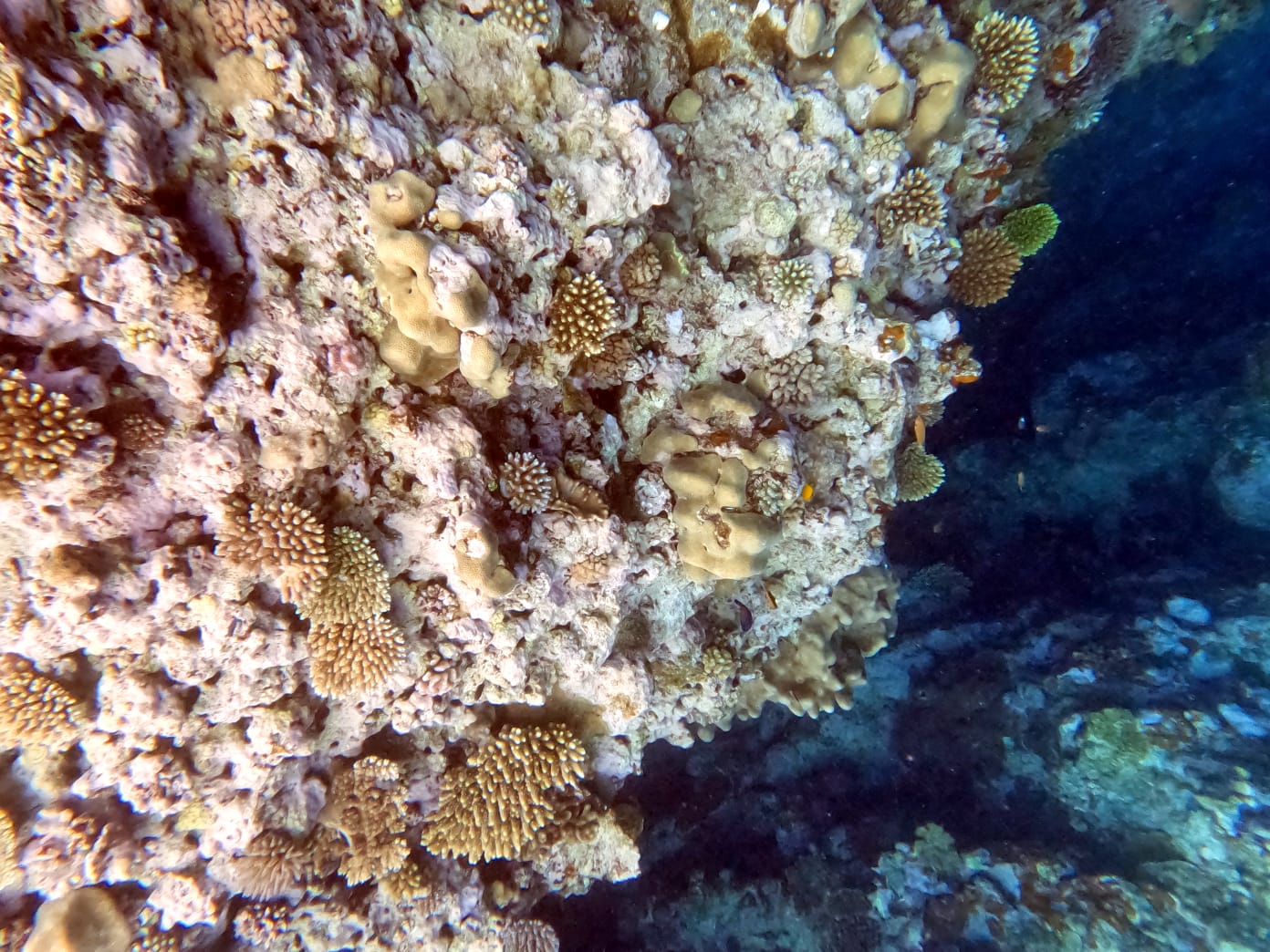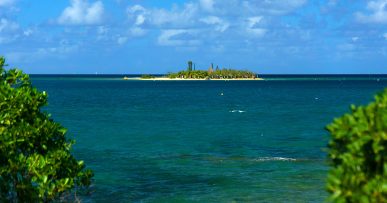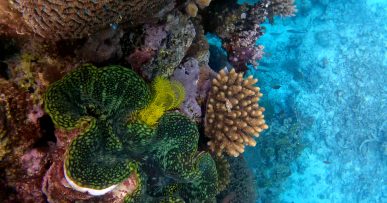- Snorkelling Pléiades du Nord
- Snorkelling Pléiades du Sud
- Exploring the underwater trail of Île aux Canards
Snorkelling New Caledonia: Pléiades du Nord, Ouvéa
Ouvéa, often described as “the island closest to paradise”, sits in New Caledonia’s Loyalty Islands. On our visit we snorkelled the Pléiades du Nord (Northern Pleiades), a chain of islets in the UNESCO World Heritage lagoon, known for crystal-clear water, dramatic volcanic reef formations, and plenty of sharks. Here’s our snorkel guide and review.
About Ouvéa
Ouvéa is part of New Caledonia, a French territory in the Pacific. The island is about 50 km long and 7 km wide, with some sections as narrow as 40 metres. Around 3,000 people live here, and languages spoken include Melanesian Iaai, Polynesian Faga Uvea, and French (English is limited). Its lagoon is a UNESCO World Heritage site, recognised for its ecological importance as a feeding ground for turtles and large fish.
In contrast to the southern reefs, the Pléiades du Nord are more exposed to trade winds — with inner reefs open to the elements and outer reefs more sheltered.
Ouvéa Island and its lagoon. NASA, 1990 (Public Domain).
Why We Chose Ouvéa
New Caledonia became our snorkel destination after Covid-19 restrictions made Vanuatu inaccessible. Researching the Isle of Pines, we decided instead on Ouvéa for its lagoon, World Heritage status, and promise of sharks, turtles, and large fish. Known as “closest to paradise,” it was hard to resist.
Unfortunately, the lagoon had an algae bloom during our visit, making swimming unappealing. Instead, we focused on offshore snorkelling at the Pléiades.
South Ouvéa lagoon with algae bloom.
Getting There
We flew with Air Calédonie from Nouméa to Ouvéa. Tickets weren’t cheap, and luggage allowances were tight. Transport on Ouvéa is limited — car hire (book ahead at the airport) is the best option. Hotels may arrange pickups, but taxis are rare and expensive, and buses virtually non-existent.
Snorkelling Pléiades du Nord – Our Experience
Our hotel arranged a trip with Jean-Baptiste, a local snorkel guide and boat operator. Launching from near Saint Joseph Church, the trip involved a ~40 minute drive north from our accommodation in Lekiny.
Jean-Baptiste’s two assistants joined us. On the way across the lagoon, they stopped mid-journey to spear fish for our lunch — a local custom that felt more like a social event between guides than a tourist activity.
One of the sentries. Image courtesy of Alexa Fernandez, a fellow snorkeller.
The Snorkelling Experience
Conditions: We visited in September 2022. Weather was mixed (cool, windy, with patches of sun and rain), and water temperature ~20 °C. We wore spring suits, which made conditions comfortable despite the chill. Visibility was excellent — crystal clear, easily 20 metres or more.
The Reef: The volcanic reef structures ranged from shallow 2-metre shelves to steep drop-offs plunging 10–20 metres. Despite recent rains, visibility was superb, and the reef’s dramatic topography was breathtaking. Jean-Baptiste anchored directly onto the reef (not ideal for conservation), and his assistants acted as “sentries” at the front and back of our group with small spearguns.
Jean-Baptiste at the helm. Photo: Alexa Fernandez.
Marine Life We Saw
The highlight here was the sharks. On our first snorkel we saw at least eight circling below us, including blacktip and whitetip reef sharks. One massive individual had a head as wide as a car bonnet, which was intimidating for a first-time shark snorkeller. While unnerving, the visibility made observing them from the surface exhilarating.
Hard corals were patchy, with volcanic rock dominating. We expected more reef fish but found mostly small-to-medium tropical fish and larger pelagics. The reef structure suited bigger species, with sharks clearly the stars of the show. Unfortunately, our guides hurried us along, leaving little time to drift or simply observe.
Images courtesy of Alexa Fernandez, our snorkelling companion.
Other Tidbits
Snorkelling spots two and three were similar to the first — volcanic reefs, excellent visibility, and fewer sharks. Each snorkel lasted ~30–40 minutes, though the rushed pace detracted from the experience.
Why Snorkel Pléiades du Nord
If you want an adrenaline-filled snorkel with sharks in pristine visibility, Pléiades du Nord delivers. The volcanic reef structures are dramatic, and the sense of being out in the open ocean makes it memorable. But it’s not for everyone — limited coral, rushed guiding, and a lack of relaxed reef exploration make it less rewarding than southern Ouvéa.
Would We Return?
No. While it was worth experiencing once — for the sharks, volcanic reef, and crystal waters — it lacked the coral diversity and guiding quality we found in the Pléiades du Sud. We’d recommend the southern snorkel over the north for most visitors.
Our Verdict – Snorkelling Pléiades du Nord
- Snorkel rating: ⭐⭐☆☆☆ (2 out of 5)
- Highlights: sharks in crystal-clear water, dramatic volcanic reef topography.
- Lowlights: patchy coral, limited fish diversity, rushed guiding, and anchoring directly onto reef.
FAQs – Snorkelling Ouvéa & Pléiades du Nord
Is Pléiades du Nord good for snorkelling?
It’s best for shark encounters and dramatic reef scenery, but coral and fish life are limited compared to other sites.
How do you get there?
Fly to Ouvéa from Nouméa with Air Calédonie, then drive north to meet a local boat operator such as Jean-Baptiste.
Do you need a guide?
Yes — snorkelling is remote, exposed, and shark-heavy. Local guides know the sites and currents, though experiences vary.
Which is better – Pléiades du Nord or Sud?
We recommend Pléiades du Sud for more colourful reefs, better guiding, and an overall more enjoyable experience.


